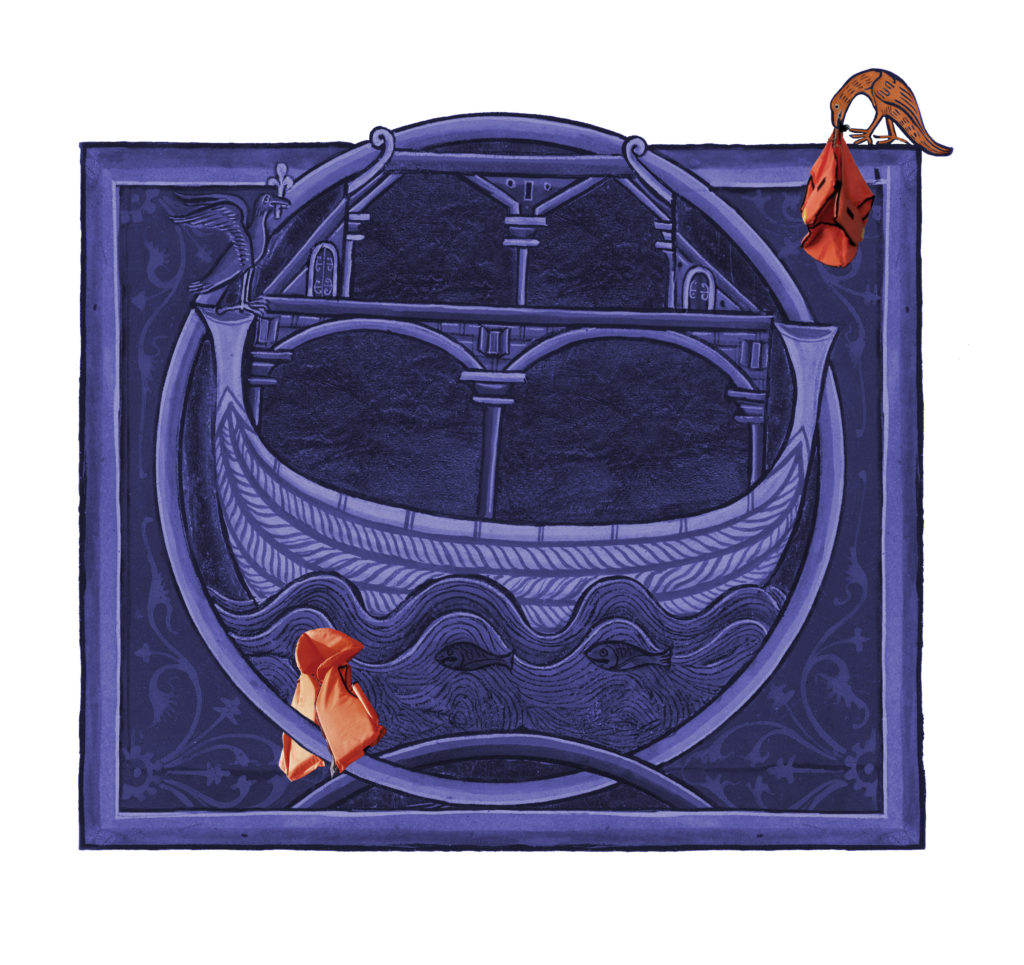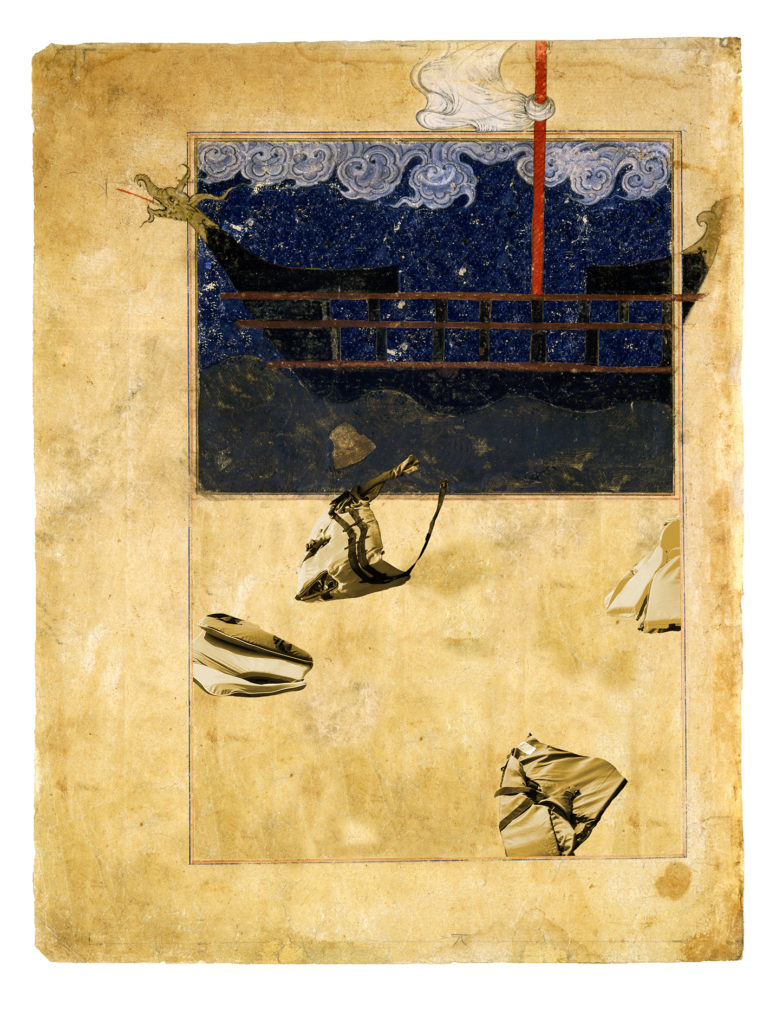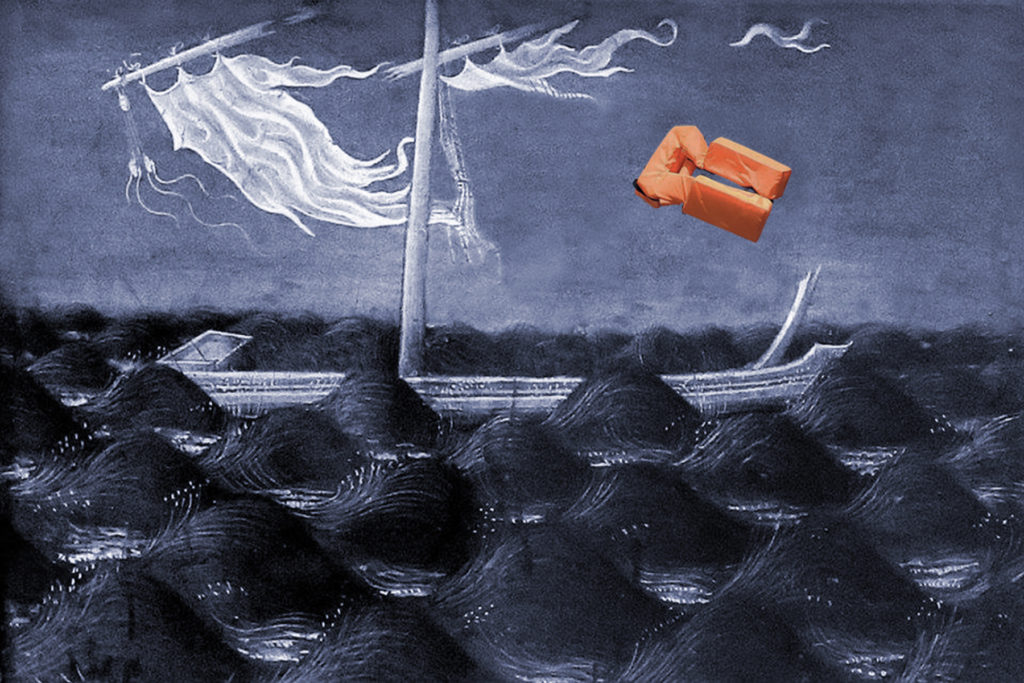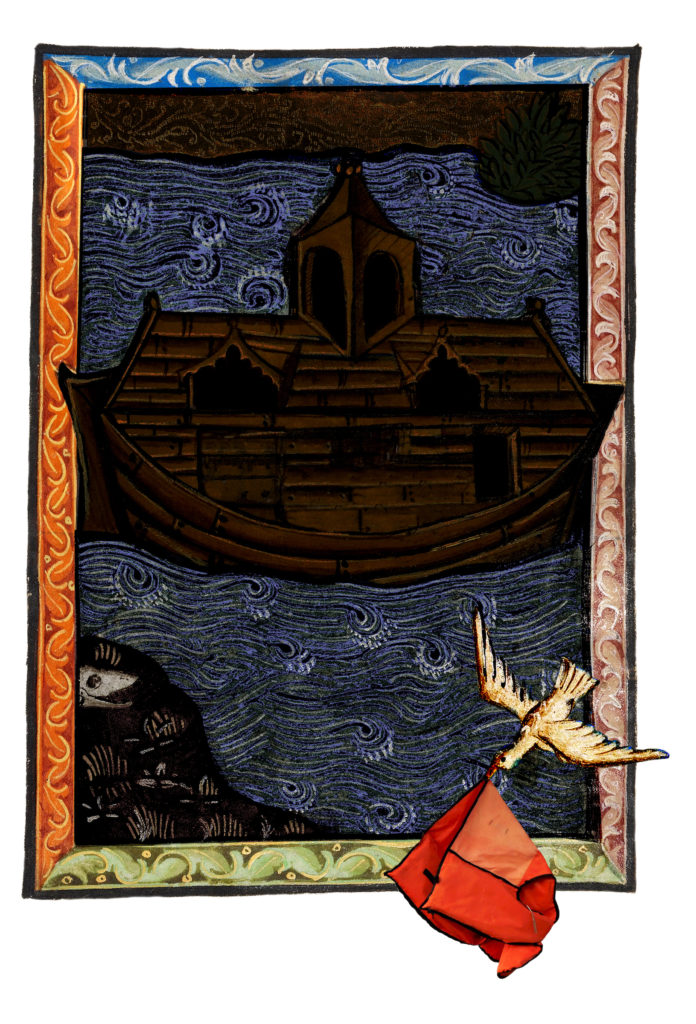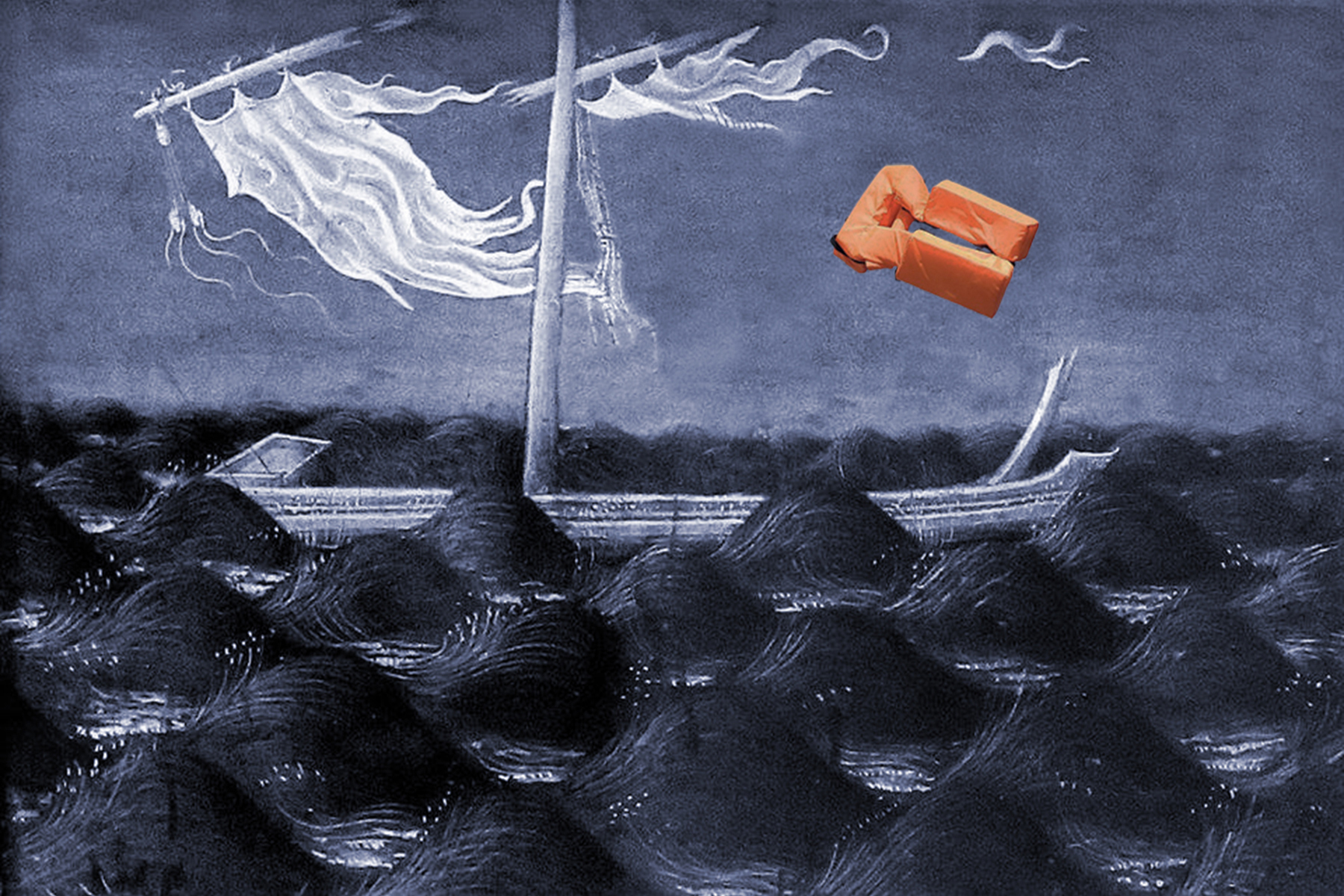
Ghost Ships
Though the global refugee crisis today is dire, their plight is not a new phenomenon. Across time, the making of states, and their failures, have prompted the besieged and persecuted to flee—to neighboring states and across so many waters of the world.
Ghost Ships focuses on sea vessels that bear the desperate. The source imagery is derived from fables, myths and stories of peril and survival—from western and eastern cultures across centuries. The arks and boats are either intact or wrecked, but always emptied of humanity. Modern instruments of rescue—lifejackets—either fill their decks, float around the wreckage, or scatter to the winds. Occasionally, ravens or doves carry them in their beaks, arriving too late or withholding aid.
While there is much generosity offered to those crossing borders, there is also much resistance. Refugee boats are caught up in maelstroms of both nature and politics. Once afloat, their passengers must withstand the elements; but before, during and after their voyage, they face human obstacles as well—the crimes of unscrupulous smugglers and the underworlds of societies that prey upon the undocumented. Unseaworthy vessels are filled beyond capacity. Refugees have been fired upon from shore and at sea. Far right movements in Europe promote the preservation of national identity and a return to ‘traditional western values’. Anti-immigrant groups and governments have vowed to stop the ‘invasion’ of refugees attempting to sail to Europe, by disrupting rescue missions or physically blocking boats loaded with North African migrants. They accuse NGOs of colluding with traffickers to bring unwelcome migrants that they characterize as ‘enemies of Europe.’
American counterparts also promote a white ethno-state. Such movements here and abroad demand stronger borders and more barriers; they are willing to thwart—even prosecute—life-saving efforts (rescues at sea or water provisions in the desert) in order to advance a xenophobic agenda. Meanwhile, over the last two decades, there have been over 34,000 deaths recorded of migrants traveling to Europe at sea, as well as in detention blocks, asylum units, factories and town centers and at least 7,000 border deaths recorded in the USA.1,2
Many people in countries that attract the highest number of immigrants believe that they strengthen their nations. Still, citizens remain divided over how many to accept, criteria for entry, and policies to be enforced. A considerable number oppose admitting undocumented refugees or migrants fleeing from war, crime, poverty or oppression. Ghost Ships exposes the consequences of this opposition, whether arising from indifference, resentment, or fear of ‘the stranger.’ The consequence is denial of safe and humane harbor, on land or at sea.
1 https://www.theguardian.com/world/2018/jun/20/the-list-europe-migrant-bodycount
2 https://www.theguardian.com/us-news/2021/jan/30/us-mexico-border-crossings-arizona-2020-deadliest-year
Ark I and Ark II | Black Ark | Ghost Ship | Windblown | Dark Ark
Ark I and Ark II, 2017, archival digital prints/Hahnemühle paper, framed 25.25 x 23.75 inches
Source: Noah’s Ark. Psalterius [psautier latin dit de saint Louis et de Blanche de Castille], c. XIII century, Ms-1186 réserve, f. 13v, Bibliothèque de l’Arsenal
The mothers will ask us
Husam Eddin Mohammad, excerpts from Andalucia of the Trains
About the sea
…We shall tell them about the sea
How it threw us to our death
So we ploughed through Europe’s fields
In order to flip the dice of life
We shall tell how we crossed the Aegean Sea
And were lost like Ulysses
How we travelled the sea to a jungle in France
And the rescuers surrounded us with barbed wire and presents


